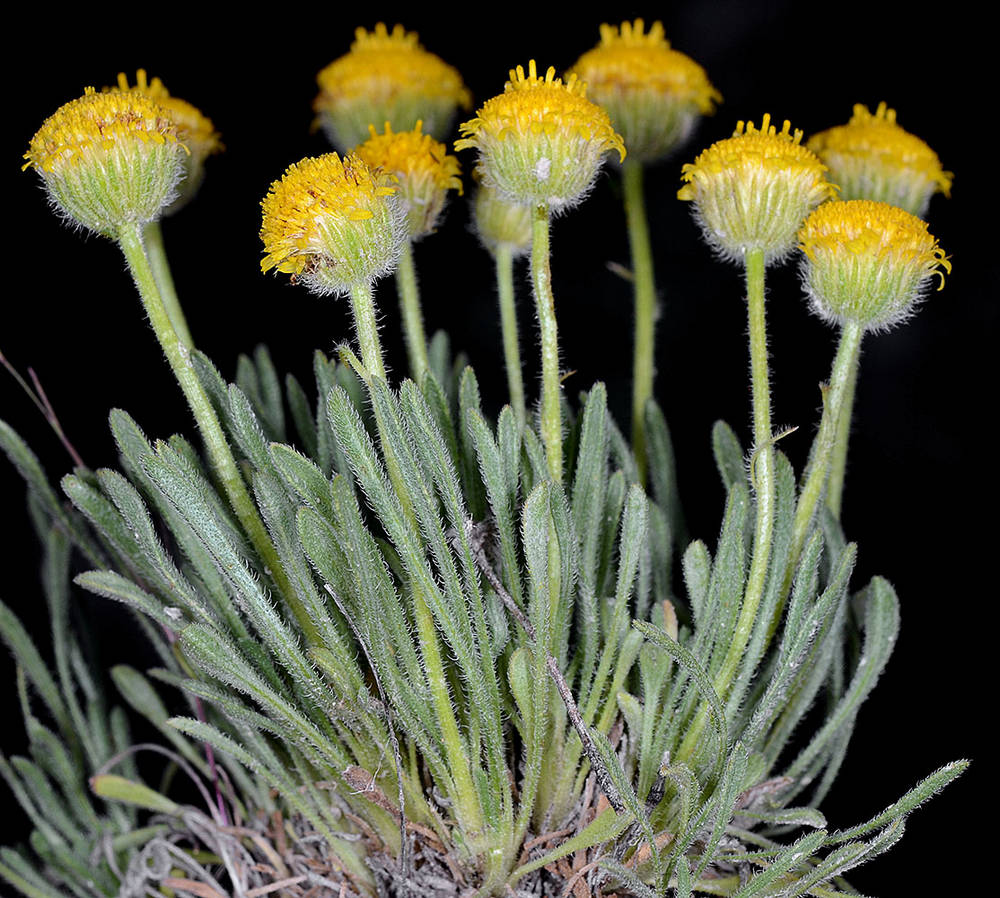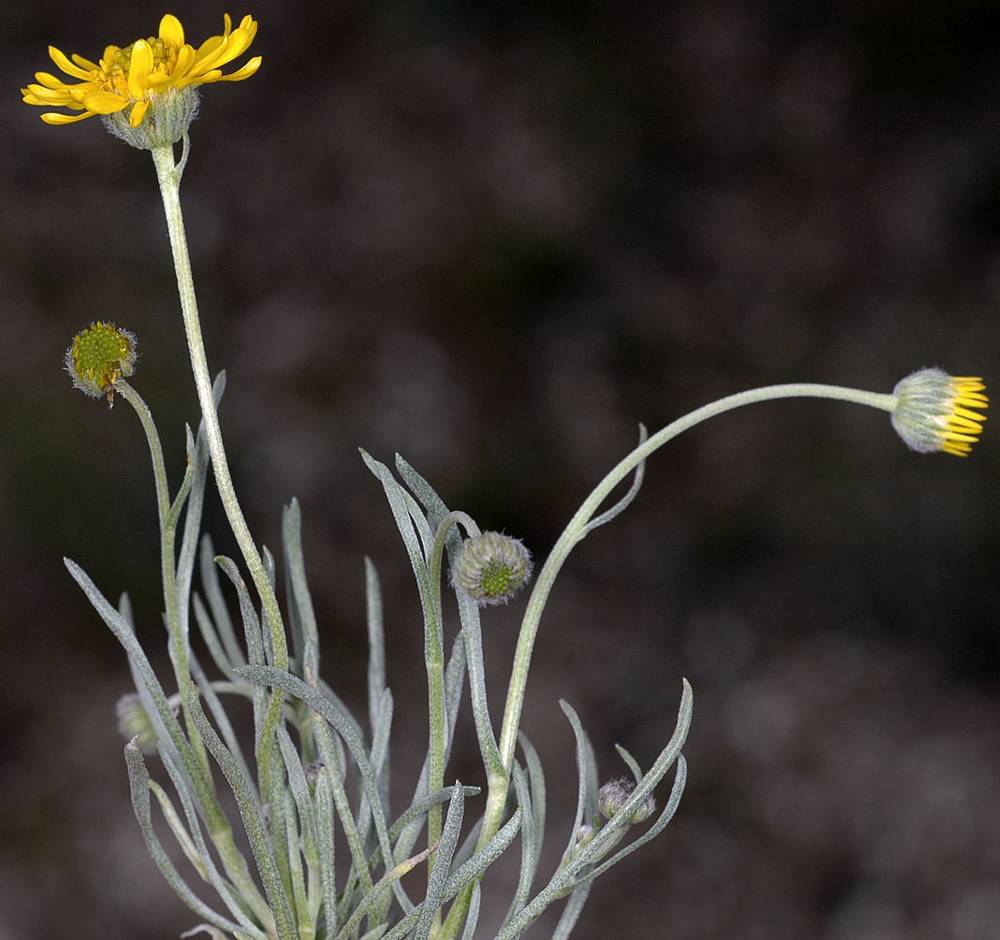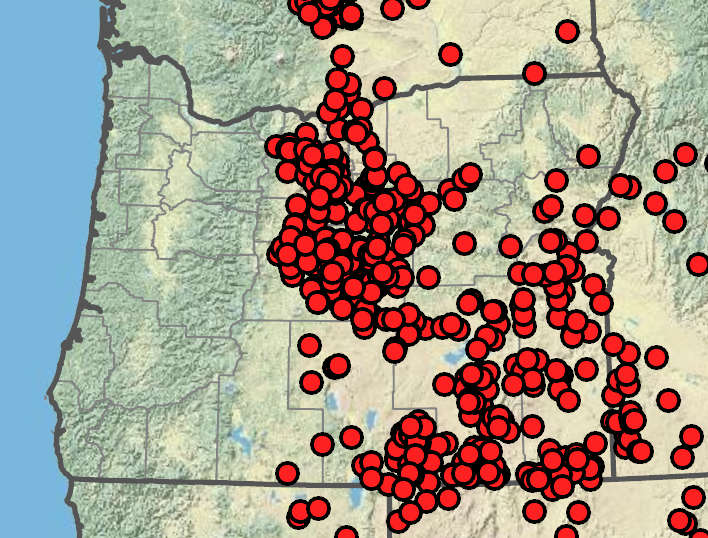Erigeron chrysopsidis
Erigeron linearis
dwarf yellow fleabane
desert yellow fleabane, lineleaf fleabane
erect; hirsute, eglandular to minutely glandular.
erect or basally ascending, moderately to densely strigose, eglandular.
persistent in dense clusters, linear to narrowly oblanceolate, 10–80 × 1–3 mm;
margins entire with hispid hairs;
surfaces hirsute to hispid, sometimes nearing strigose.
persistent, linear to very narrowly oblanceolate, 15–80 × 0.5–2 mm, bases sheathing and light- or white-colored;
margins entire;
surfaces moderately to densely strigose, eglandular.
abruptly reduced to (0)1–3 linear bracts.
linear, 5–20 × 0.5–1 mm, usually reduced distally, bases sheathing.
4–7 × 10–16 mm.
5–8 × 9–13 mm.
20–60;
corollas with well-developed yellow rays, 4–8 × 0.5–2 mm, or tubular and short, or rays lacking.
20–40, bright yellow;
rays 5–7 × 1–2 mm.
corollas 4–5 mm.
corollas 3–5 mm.
in 2–3 series, sparsely to moderately hispid-villous, often minutely glandular.
in 2–3 series;
surfaces moderately to densely strigose; hirsute, or manicate, minutely glandular.
2–3 mm, moderately strigose;
inner pappi of numerous barbellate bristles.
2–3 mm, sparsely strigose;
inner pappi of numerous barbellate bristles.
1, radiate or disciform.
1(2), radiate.
=18, 27, 36, 45.
Erigeron chrysopsidis
Erigeron linearis
Western United States. 3 varieties.
Rocky areas, sagebrush, juniper forests. Flowering May–Jul. 200–2500 m. BR, BW, Col, ECas, Lava, Owy. CA, ID, NV, WA; north to British Columbia, northeast to MT, east to WY, southeast to UT. Native.
James Riser, Stephen Meyers
James Riser, Stephen Meyers
- Local floras:
BC,
CA,
OR,
WA
- Local Web sites:
CalFlora,
CalPhotos,
Flora NW,
PNW Herbaria,
Turner Photog.
WildflowerSearch
iNaturalist (observations)
USDA Plants Database
- LBJ Wildflower Center
- SEINet
- Plants of the World Online
- Encyclopedia of Life
- Wikipedia
- Google Image Search





